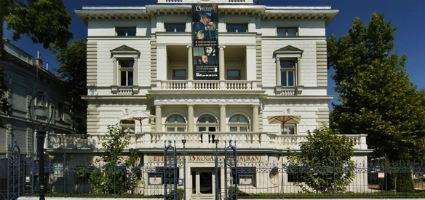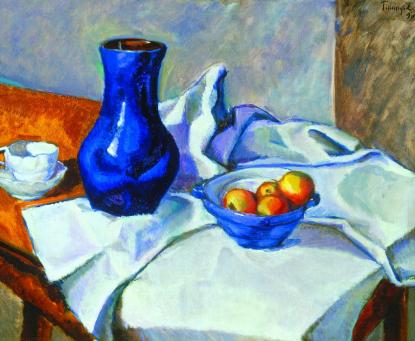2024. April 27. Saturday
Kogart House - Budapest
 |
The exhibition has closed for visitors.
2012.04.20. - 2012.08.20.
KOGART's new exhibition presents Tihanyi’s best works, those that marked him as an innovator among compatriots and foreign artists alike. The display tries to determine his position in the history of Hungarian painting and European art, and identify those works that made him an eminent member of the European avant-garde. The exhibit segments the oeuvre by the different scenes of the artist's life (Nagybánya, Budapest, Bécs, etc.), and by the changes in his style.

Tihanyi started to study painting in the early 1900s, in Nagybánya, where thanks to the colony's innovators, the so-called neo-Impressionists, he came to know the achievements of the latest trend in French art, Fauvism. He travelled to Paris, but owing especially to Cézanne, he developed an interest in more solid compositions, in emphasizing the structure of the picture, which eventually led him to Cubism, then emerging in the work of Picasso and Braque. In 1909 he joined the group that called itself The Eight (Czóbel, Berény, Kernstok, Márffy, Pór, Czigány, Orbán and Tihanyi), with an art that fused Fauvism and the structure-biased painting of El Greco and Cézanne with elements of Picasso's Cubism. In the early 1910s he turned to Expressionism and Futurism, while the 1930s already saw him exploring the possibilities of abstract expression. In 1933 he became a member of the French Abstraction-Création group. Thanks to his friends - photographers Brassaï and André Kertész, as well as painter Jacques de la Frégonniere -, his oeuvre has survived, and his estate was returned to Hungary in 1970.
On the occasion of the exhibition, the Foundation publishes a small monograph on Tihanyi, with a study by art historian Krisztina Passuth, about 80 colour reproductions, documents, original texts, an oeuvre list and bibliography, and a complete list of the exhibits. In the video room of KOGART, visitors can see a film about the 1973 exhibition at the Hungarian National Gallery, in which author Tibor Déry talks about Lajos Tihanyi.

Tihanyi started to study painting in the early 1900s, in Nagybánya, where thanks to the colony's innovators, the so-called neo-Impressionists, he came to know the achievements of the latest trend in French art, Fauvism. He travelled to Paris, but owing especially to Cézanne, he developed an interest in more solid compositions, in emphasizing the structure of the picture, which eventually led him to Cubism, then emerging in the work of Picasso and Braque. In 1909 he joined the group that called itself The Eight (Czóbel, Berény, Kernstok, Márffy, Pór, Czigány, Orbán and Tihanyi), with an art that fused Fauvism and the structure-biased painting of El Greco and Cézanne with elements of Picasso's Cubism. In the early 1910s he turned to Expressionism and Futurism, while the 1930s already saw him exploring the possibilities of abstract expression. In 1933 he became a member of the French Abstraction-Création group. Thanks to his friends - photographers Brassaï and André Kertész, as well as painter Jacques de la Frégonniere -, his oeuvre has survived, and his estate was returned to Hungary in 1970.
On the occasion of the exhibition, the Foundation publishes a small monograph on Tihanyi, with a study by art historian Krisztina Passuth, about 80 colour reproductions, documents, original texts, an oeuvre list and bibliography, and a complete list of the exhibits. In the video room of KOGART, visitors can see a film about the 1973 exhibition at the Hungarian National Gallery, in which author Tibor Déry talks about Lajos Tihanyi.
